Zero-Energy Buildings and Energy Efficiency towards Sustainability: A Bibliometric Review and a Case Study
Abstract
:1. Introduction
2. Materials and Methods
2.1. Bibliometric Analysis Methods
2.2. Bibliometric Analysis Tool
2.3. Data Collection
3. Results and Discussion
3.1. Annual Publications Trend of ZEBs and Energy Efficiency towards Sustainability
3.2. Journal Publication Contribution to ZEBs and Energy Efficiency towards Sustainability
3.3. Geospatial Distribution of Research Publications
3.4. Author Keywords Co-Occurrence Analysis
- Energy Efficiency Integrated Cluster (blue)
- 2.
- Sustainability Integrated Cluster (green)
- 3.
- Thermal Comfort Integrated Cluster (red)
- 4.
- Embodied Energy Integrated Cluster (purple)
- 5.
- Zero Energy Building (ZEB) Integrated Cluster (yellow)
- 6.
- Sustainable Development Integrated Cluster (light blue)
3.5. New Techniques and Emerging Trends towards Sustainability
3.6. Future Research Needs
4. A Case Study of a Low-Energy House in Bialystok (NE Poland)
- -
- total area: 171.89 m2,
- -
- volume: 822.3 m3,
- -
- usable heated area: 140.53 m2,
- -
- clear height of rooms: 2.70 m (ground floor) and 2.50 m (first floor),
- -
- heated volume: 702.3 m3,
- -
- shape factor 0.70 m−1.
- -
- properly designed (with U-values of the building envelope much lower than the current Polish requirements),
- -
- equipped with very efficient balanced ventilation with heat recovery (with 90% heat recovery efficiency) and a ground heat exchanger for pre-heating the ventilation air,
- -
- constructed very precisely.
- -
- variant I: PV system for electrical energy production to power the heat pump,
- -
- variant II: PV system for electrical energy production to meet requirements of total final, annual energy consumption (not only for heating, ventilation, domestic hot water, and auxiliary systems, but also for lighting and other electrical appliances).
5. Conclusions
Author Contributions
Funding
Institutional Review Board Statement
Informed Consent Statement
Data Availability Statement
Acknowledgments
Conflicts of Interest
References
- Li, D.H.W.; Yang, L.; Lam, J.C. Zero energy buildings and sustainable development implications—A review. Energy 2013, 54, 1–10. [Google Scholar] [CrossRef]
- Belussi, L.; Barozzi, B.; Bellazzi, A.; Danza, L.; Devitofrancesco, A.; Fanciulli, C.; Ghellere, M.; Guazzi, G.; Meroni, I.; Salamone, F.; et al. A review of performance of zero energy buildings and energy efficiency solutions. J. Build. Eng. 2019, 25, 100772. [Google Scholar] [CrossRef]
- GhaffarianHoseini, A.; Dahlan, N.D.; Berardi, U.; GhaffarianHoseini, A.; Makaremi, N.; GhaffarianHoseini, M. Sustainable energy performances of green buildings: A review of current theories, implementations and challenges. Renew. Sustain. Energy Rev. 2013, 25, 1–17. [Google Scholar] [CrossRef]
- Mills, B.; Schleich, J. Residential energy-efficient technology adoption, energy conservation. Knowledge, and attitudes: An analysis of European countries. Energy Policy 2012, 49, 616–628. [Google Scholar] [CrossRef] [Green Version]
- Jordaan, S.M.; Romo-Rabago, E.; McLeary, R.; Reidy, L.; Nazari, J.; Herremans, I.M. The role of energy technology innovation in reducing greenhouse gas emissions: A case study of Canada. Renew. Sustain. Energy Rev. 2017, 78, 1397–1409. [Google Scholar] [CrossRef]
- Andaloro, A.P.F.; Salomone, R.; Ioppolo, G.; Andaloro, L. Energy certification of buildings: A comparative analysis of progress towards implementation in European countries. Energy Policy 2010, 38, 5840–5866. [Google Scholar] [CrossRef]
- Li, D.W.H.; Yang, L.; Lam, J.C. Impact of climate change on energy use in the built environment in different climate zones—A review. Energy 2012, 42, 103–112. [Google Scholar] [CrossRef]
- Wan, K.K.W.; Li, D.H.W.; Liu, D.; Lam, J.C. Future trends of building heating and cooling loads and energy consumption in different climates. Build. Environ. 2011, 46, 223–234. [Google Scholar] [CrossRef]
- Vine, E.; Hamrin, J.; Eyre, N.; Crossley, D.; Maloney, M.; Watt, G. Public policy analysis of energy efficiency and load management in changing electricity businesses. Energy Policy 2003, 31, 405–430. [Google Scholar] [CrossRef]
- Rammel, C.; van den Bergh, J.C.J.M. Evolutionary policies for sustainable development: Adaptive flexibility and risk minimising. Ecol. Econ. 2003, 47, 121–133. [Google Scholar] [CrossRef]
- European Commission. Directive (EU) 2018/844 of the European Parliament and of the Council of 30 May 2018 Amending Directive 2010/31/EU on the Energy Performance of Buildings and Directive 2012/27/EU on Energy Efficiency. 2018. Available online: https://eur-lex.europa.eu/legal-content/EN/TXT/?uri=uriserv%3AOJ.L_.2018.156.01.0075.01.ENG (accessed on 31 January 2022).
- Fokaides, P.A.; Panteli, C.; Panayidou, A. How Are the Smart Readiness Indicators Expected to Affect the Energy Performance of Buildings: First Evidence and Perspectives. Sustainability 2020, 12, 9496. [Google Scholar] [CrossRef]
- Hossaini, N.; Hewage, K.; Sadiq, R. Spatial life cycle sustainability assessment: A conceptual framework for net-zero buildings. Clean Technol. Environ. Policy. 2015, 17, 2243–2253. [Google Scholar] [CrossRef]
- Skaar, C.; Labonnote, N.; Gradeci, K. From zero emission buildings (ZEB) to Zero emission neighbourhoods (ZEN): A mapping review of algorithm-based LCA. Sustainability 2018, 10, 2405. [Google Scholar] [CrossRef] [Green Version]
- Rosen, M.A. Engineering sustainability: A technical approach to sustainability. Sustainability 2012, 4, 2270–2292. [Google Scholar] [CrossRef] [Green Version]
- Finnegan, S.; Jones, C.; Sharples, S. The embodied CO2e of sustainable energy technologies used in buildings: A review article. Energy Build. 2018, 181, 50–61. [Google Scholar] [CrossRef]
- Clift, R. Climate change and energy policy: The importance of sustainability arguments. Energy 2007, 32, 262–268. [Google Scholar] [CrossRef]
- Pham, A.D.; Ngo, N.T.; Truong, T.T.H.; Huynh, N.T.; Truong, N.S. Predicting energy consumption in multiple buildings using machine learning for improving energy efficiency and sustainability. J. Clean. Prod. 2020, 260, 121082. [Google Scholar] [CrossRef]
- Markovic, D.S.; Zivkovic, D.; Cvetkovic, D.; Popovic, R. Impact of nanotechnology advances in ICT on sustainability and energy efficiency. Renew. Sustain. Energy Rev. 2012, 16, 2966–2972. [Google Scholar] [CrossRef]
- Mikučionienė, R.; Martinaitis, V.; Keras, E. Evaluation of energy efficiency measures sustainability by decision tree method. Energy Build. 2014, 76, 64–71. [Google Scholar] [CrossRef]
- Cleveland, C.J. Net energy from the extraction of oil and gas in the United States. Energy 2005, 30, 769–782. [Google Scholar] [CrossRef]
- Crawford, R.H.; Treloar, G.J. Net energy analysis of solar and conventional domestic hot water systems in Melbourne. Australia. Sol. Energy 2004, 76, 159–163. [Google Scholar] [CrossRef] [Green Version]
- la Cruz-Lovera, D.; Perea-Moreno, A.-J.; la Cruz-Fernández, D.; Alvarez-Bermejo, J.A.; Manzano-Agugliaro, F. Worldwide research on energy efficiency and sustainability in public buildings. Sustainability 2017, 9, 1294. [Google Scholar] [CrossRef] [Green Version]
- Al-Tamimi, N. A state-of-the-art review of the sustainability and energy efficiency of buildings in Saudi Arabia. Energy Effic. 2017, 10, 1129–1141. [Google Scholar] [CrossRef]
- Popescu, D.; Bienert, S.; Schützenhofer, C.; Boazu, R. Impact of energy efficiency measures on the economic value of buildings. Appl. Energy 2012, 89, 454–463. [Google Scholar] [CrossRef]
- Bot, K.; Ramos, N.M.M.; Almeida, R.M.S.F.; Pereira, P.F.; Monteiro, C. Energy performance of buildings with on-site energy generation and storage–An integrated assessment using dynamic simulation. J. Build. Eng. 2019, 24, 100769. [Google Scholar] [CrossRef]
- Cao SHasan ASirén, K. On-site energy matching indices for buildings with energy conversion, storage and hybrid grid connections. Energy Build. 2013, 64, 423–438. [Google Scholar]
- Manzoor, B.; Othman, I.; Gardezi, S.S.S.; Harirchian, E. Strategies for Adopting Building Information Modeling (BIM) in Sustainable Building Projects—A Case of Malaysia. Buildings 2021, 11, 249. [Google Scholar] [CrossRef]
- Warren-Myers, G. New homebuyers and the challenges of navigating sustainability and energy efficiency with Australian volume builders. Energy Procedia 2017, 134, 214–223. [Google Scholar] [CrossRef]
- Montoya, F.G.; Peña-García, A.; Juaidi, A.; Manzano-Agugliaro, F. Indoor lighting techniques: An overview of evolution and new trends for energy saving. Energy Build. 2017, 140, 50–60. [Google Scholar] [CrossRef]
- Pandharipande, A.; Caicedo, D. Smart indoor lighting systems with luminaire-based sensing: A review of lighting control approaches. Energy Build. 2015, 104, 369–377. [Google Scholar] [CrossRef]
- Manzoor, B.; Othman, I.; Durdyev, S.; Ismail, S.; Wahab, M.H. Influence of Artificial Intelligence in Civil Engineering toward Sustainable Development—A Systematic Literature Review. Appl. Syst. Innov. 2021, 4, 52. [Google Scholar] [CrossRef]
- Castaldo, V.L.; Pisello, A.L.; Piselli, C.; Fabiani, C.; Cotana, F.; Santamouris, M. How outdoor microclimate mitigation affects building thermal-energy performance: A new design-stage method for energy saving in residential near-zero energy settlements in Italy. Renew. Energy 2018, 127, 920–935. [Google Scholar] [CrossRef]
- Isaac, S.; Shubin, S.; Rabinowitz, G. Cost-Optimal Net Zero Energy Communities. Sustainability 2020, 12, 2432. [Google Scholar] [CrossRef] [Green Version]
- D’Agostino, D.; Marino, C.; Minichiello, F.; Russo, F. Obtaining a NZEB in Mediterranean climate by using only on-site renewable energy: Is it a realistic goal? Energy Procedia 2017, 40, 23–25. [Google Scholar] [CrossRef]
- Moran, P.; O’Connell, J.; Goggins, J. Sustainable energy efficiency retrofits as residenial buildings move towards nearly zero energy building (NZEB) standards. Energy Build. 2020, 211, 109816. [Google Scholar] [CrossRef]
- Khakian, R.; Karimimoshaver, M.; Aram, F.; Zoroufchi Benis, S.; Mosavi, A.; Varkonyi-Koczy, A.R. Modeling nearly zero energy buildings for sustainable development in rural areas. Energies 2020, 13, 2593. [Google Scholar] [CrossRef]
- Chel, A.; Kaushik, G. Renewable energy technologies for sustainable development of energy efficient building. Alexandria Eng. J. 2018, 57, 655–669. [Google Scholar] [CrossRef]
- Camarasa, C.; Nägeli, C.; Ostermeyer, Y.; Klippel, M.; Botzler, S. Diffusion of energy efficiency technologies in European residential buildings: A bibliometric analysis. Energy Build. 2019, 202, 109339. [Google Scholar] [CrossRef]
- Sinsel, S.R.; Riemke, R.L.; Hoffmann, V.H. Challenges and solution technologies for the integration of variable renewable energy sources—A review. Renew. Energy. 2020, 145, 2271–2285. [Google Scholar] [CrossRef]
- Udomsap, A.D.; Hallinger, P. A bibliometric review of research on sustainable construction. 1994–2018. J. Clean. Prod. 2020, 254, 120073. [Google Scholar] [CrossRef]
- Zhao, X.; Zuo, J.; Wu, G.; Huang, C. A bibliometric review of green building research 2000–2016. Archit. Sci. Rev. 2019, 62, 74–88. [Google Scholar] [CrossRef]
- Li, Y.; Rong, Y.; Ahmad, U.M.; Wang, X.; Zuo, J.; Mao, G. A comprehensive review on green buildings research: Bibliometric analysis during 1998–2018. Environ. Sci. Pollut. Res. 2021, 28, 46196–46214. [Google Scholar] [CrossRef]
- Wang, H.; Pan, Y.; Luo, X. Integration of BIM and GIS in sustainable built environment: A review and bibliometric analysis. Autom. Constr. 2019, 103, 41–52. [Google Scholar] [CrossRef]
- Chan, T.K. Building and construction research in Malaysia: A bibliometric analysis. J. Constr. Dev. Ctries 2019, 24, 65–84. [Google Scholar]
- Li, J.; Wang, M.-H.; Ho, Y.-S. Trends in research on global climate change: A Science Citation Index Expanded-based analysis. Glob. Planet. Chang. 2011, 77, 13–20. [Google Scholar] [CrossRef]
- Learn How to Use Gephi. Available online: https://gephi.org/users/ (accessed on 15 January 2022).
- CiteSpace: Visualizing Patterns and Trends in Scientific Literature. Available online: drexel.edu (accessed on 15 January 2022).
- Sci2 Tool: A Tool for Science of Science Research and Practice. Available online: iu.edu (accessed on 15 January 2022).
- HistCite 12.3 Download (Free)—HistCite.exe. Available online: informer.com (accessed on 15 January 2022).
- VOSviewer—Visualizing Scientific Landscapes. Available online: www.vosviewer.com (accessed on 15 January 2022).
- Bastian, M.; Heymann, S.; Jacomy, M. Gephi: An open source software for exploring and manipulating networks. In Proceedings of the International AAAI Conference on Web and Social Media, Seattle, WA, USA, 30 March–2 April 2008. [Google Scholar]
- Pradhan, P. Science Mapping and Visualization Tools Used in Bibliometric & Scientometric Studies: An Overview; INFLIBNET Centre Gandhinagar: Gujarat, India, 2017; Volume 23, pp. 19–33. [Google Scholar]
- Yang, J.; Cheng, C.; Shen, S.; Yang, S. Comparison of complex network analysis software: Citespace, SCI 2 and Gephi. In Proceedings of the 2017 IEEE 2nd Internation Conference Big Data Analysis, Beijing, China, 10–12 March 2017; pp. 169–172. [Google Scholar]
- Garfield, E. From the science of science to Scientometrics visualizing the history of science with HistCite software. J. Informetr. 2009, 3, 173–179. [Google Scholar] [CrossRef] [Green Version]
- Nobanee, H.; Al Hamadi, F.; Abdulaziz, F.; Abukarsh, L.; Alqahtani, A.; AlSubaey, S.; Alqahtani, S.; Almansoori, H. A Bibliometric Analysis of Sustainability and Risk Management. Sustainability 2021, 13, 3277. [Google Scholar] [CrossRef]
- Guo, Y.-M.; Huang, Z.-L.; Guo, J.; Li, H.; Guo, X.-R.; Nkeli, M.J. Bibliometric analysis on smart cities research. Sustainability 2019, 11, 3606. [Google Scholar] [CrossRef] [Green Version]
- Ertz, M.; Leblanc-Proulx, S. Sustainability in the collaborative economy: A bibliometric analysis reveals emerging interest. J. Clean. Prod. 2018, 196, 1073–1085. [Google Scholar] [CrossRef]
- Muñoz-Villamizar, A.; Solano, E.; Quintero-Araujo, C.; Santos, J. Sustainability and digitalization in supply chains: A bibliometric analysis. Uncertain Supply Chain Manag. 2019, 7, 703–712. [Google Scholar] [CrossRef]
- Trufil, G.; Hunter, K. Development of a sustainability framework to promote business competitiveness in construction SMEs. In Proceedings of the Symposium on Sustainability and Value Through Construction Procurement, Salford, UK, 29 November–2 December 2006. [Google Scholar]
- Di Maria, A.; Snellings, R.; Alaerts, L.; Quaghebeur, M.; Van Acker, K. Environmental assessment of CO2 mineralisation for sustainable construction materials. Int. J. Greenh. Gas Control. 2020, 93, 102882. [Google Scholar] [CrossRef]
- Giraldo, P.; Benavente, E.; Manzano-Agugliaro, F.; Gimenez, E. Worldwide research trends on wheat and barley: A bibliometric comparative analysis. Agronomy 2019, 9, 352. [Google Scholar] [CrossRef] [Green Version]
- Shaikh, P.H.; Nor, N.B.M.; Sahito, A.A.; Nallagownden, P.; Elamvazuthi, I.; Shaikh, M.S. Building energy for sustainable development in Malaysia: A review. Renew. Sustain. Energy Rev. 2017, 75, 1392–1403. [Google Scholar] [CrossRef]
- Soares, N.; Santos, P.; Gervásio, H.; Costa, J.J.; Da Silva, L.S. Energy efficiency and thermal performance of lightweight steel-framed (LSF) construction: A review. Renew. Sustain. Energy Rev. 2017, 78, 194–209. [Google Scholar] [CrossRef]
- Tronchin, L.; Manfren, M.; Nastasi, B. Energy efficiency, demand side management and energy storage technologies–A critical analysis of possible paths of integration in the built environment. Renew. Sustain. Energy Rev. 2018, 95, 341–353. [Google Scholar] [CrossRef]
- Zhang, Y.; Ma, Q.; Li, B.; Fan, X.; Fu, Z. Application of an air source heat pump (ASHP) for heating in Harbin, the coldest provincial capital of China. Energy Build. 2017, 138, 96–103. [Google Scholar] [CrossRef]
- Xu, Z.; Liu, F.; Xu, W.; Wang, Z.; Yang, Y.; Xu, C.; Wu, P.; Li, X. Atmospheric air quality in Beijing improved by application of air source heat pump (ASHP) systems. J. Clean. Prod. 2020, 257, 120582. [Google Scholar] [CrossRef]
- Huang, S.; Zuo, W.; Lu, H.; Liang, C.; Zhang, X. Performance comparison of a heating tower heat pump and an air-source heat pump: A comprehensive modeling and simulation study. Energy Convers. Manag. 2019, 180, 1039–1054. [Google Scholar] [CrossRef]
- Tronchin, L.; Manfren, M.; Tagliabue, L.C. Optimization of building energy performance by means of multi-scale analysis—Lessons learned from case studies. Sustain. Cities Soc. 2016, 27, 296–306. [Google Scholar] [CrossRef]
- Li, Y.; Kubicki, S.; Guerriero, A.; Rezgui, Y. Review of building energy performance certification schemes towards future improvement. Renew. Sustain. Energy Rev. 2019, 113, 109244. [Google Scholar] [CrossRef]
- Harish, V.; Kumar, A. A review on modeling and simulation of building energy systems. Renew. Sustain. Energy Rev. 2016, 56, 1272–1292. [Google Scholar] [CrossRef]
- Soares, N.; Bastos, J.; Pereira, L.D.; Soares, A.; Amaral, A.R.; Asadi, E.; Rodrigues, E.; Lamas, F.B.; Monteiro, H.; Lopes, M.A.R. A review on current advances in the energy and environmental performance of buildings towards a more sustainable built environment. Renew. Sustain. Energy Rev. 2017, 77, 845–860. [Google Scholar] [CrossRef]
- Song, M.; Mao, N.; Xu, Y.; Deng, S. Challenges in. and the development of, building energy saving techniques, illustrated with the example of an air source heat pump. Therm. Sci. Eng. Prog. 2019, 10, 337–356. [Google Scholar] [CrossRef]
- Wallbaum, H.; Ostermeyer, Y.; Salzer, Y.; Escamilla, E.Z. Indicator based sustainability assessment tool for affordable housing construction technologies. Ecol. Indic. 2012, 18, 353–364. [Google Scholar] [CrossRef]
- Koskela, L. Application of the New Production Philosophy to Construction; Citeseer: Espoo, Finland, 1992. [Google Scholar]
- Abdellatif, M.; Al-Shamma’a, A. Review of sustainability in buildings. Sustain. Cities Soc. 2015, 14, 171–177. [Google Scholar] [CrossRef]
- Kang, H.J. Development of a systematic model for an assessment tool for sustainable buildings based on a structural framework. Energy Build. 2015, 104, 287–301. [Google Scholar] [CrossRef]
- Venkatarama Reddy, B.V. Sustainable materials for low carbon buildings. Int. J. Low-Carbon Technol. 2009, 4, 175–181. [Google Scholar] [CrossRef] [Green Version]
- Kneifel, J.; Webb, D. Predicting energy performance of a net-zero energy building: A statistical approach. Appl. Energy 2016, 178, 468–483. [Google Scholar] [CrossRef] [Green Version]
- AlFaris, F.; Juaidi, A.; Manzano-Agugliaro, F. Intelligent homes’ technologies to optimize the energy performance for the net zero energy home. Energy Build. 2017, 153, 262–274. [Google Scholar] [CrossRef]
- Carpino, C.; Loukou, E.; Heiselberg, P.; Arcuri, N. Energy performance gap of a nearly Zero Energy Building (nZEB) in Denmark: The influence of occupancy modelling. Build. Res. Inf. 2020, 48, 899–921. [Google Scholar] [CrossRef]
- Ascione, F.; Bianco, N.; De Rossi, F.; De Masi, R.F.; Vanoli, G.P. Concept, design and energy performance of a net zero-energy building in Mediterranean climate. Procedia Eng. 2016, 169, 26–37. [Google Scholar] [CrossRef]
- Manzoor, B.; Othman, I.; Pomares, J.C. Digital Technologies in the Architecture, Engineering and Construction (AEC) Industry—A Bibliometric—Qualitative Literature Review of Research Activities. Int. J. Environ. Res. Public Health 2021, 18, 6135. [Google Scholar] [CrossRef] [PubMed]
- Teng, J.; Mu, X.; Wang, W.; Xu, C.; Liu, W. Strategies for sustainable development of green buildings. Sustain. Cities Soc. 2019, 44, 215–226. [Google Scholar] [CrossRef]
- Yiing, C.F.; Yaacob, N.M.; Hussein, H. Achieving sustainable development: Accessibility of green buildings in Malaysia. Procedia-Social Behav. Sci. 2013, 101, 120–129. [Google Scholar] [CrossRef]
- Wen, B.; Musa, S.N.; Onn, C.C.; Ramesh, S.; Liang, L.; Wang, W.; Ma, K. The role and contribution of green buildings on sustainable development goals. Build. Environ. 2020, 185, 107091. [Google Scholar] [CrossRef]
- Sharma, M. Development of a ‘Green building sustainability model’ for Green buildings in India. J. Clean. Prod. 2018, 190, 538–551. [Google Scholar] [CrossRef]
- Zhang, L.; Wu, J.; Liu, H. Turning green into gold: A review on the economics of green buildings. J. Clean. Prod. 2018, 172, 2234–2245. [Google Scholar] [CrossRef]
- Dwaikat, L.N.; Ali, K.N. Green buildings cost premium: A review of empirical evidence. Energy Build. 2016, 110, 396–403. [Google Scholar] [CrossRef]
- Alawneh, R.; Ghazali, F.E.M.; Ali, H.; Asif, M. Assessing the contribution of water and energy efficiency in green buildings to achieve United Nations Sustainable Development Goals in Jordan. Build. Environ. 2018, 146, 119–132. [Google Scholar] [CrossRef]
- Liu, Z.; Liu, Y.; He, B.-J.; Xu, W.; Jin, G.; Zhang, X. Application and suitability analysis of the key technologies in nearly zero energy buildings in China. Renew. Sustain. Energy Rev. 2019, 101, 329–345. [Google Scholar]
- D’agostino, D.; Zangheri, P.; Castellazzi, L. Towards nearly zero energy buildings in Europe: A focus on retrofit in non-residential buildings. Energies 2017, 10, 117. [Google Scholar] [CrossRef]
- Manzoor, B.; Othman, I.; Kang, J.M.; Geem, Z.W. Influence of Building Information Modeling (BIM) implementation in High-Rise Buildings towards Sustainability. Appl. Sci. 2021, 11, 7626. [Google Scholar] [CrossRef]
- Manzoor, B.; Othman, I.; Gardezi, S.S.S.; Altan, H.; Abdalla, S.B. BIM-Based Research Framework for Sustainable Building Projects: A Strategy for Mitigating BIM Implementation Barriers. Appl. Sci. 2021, 11, 5397. [Google Scholar] [CrossRef]
- Gassar, A.A.A.; Cha, S.H. Energy prediction techniques for large-scale buildings towards a sustainable built environment: A review. Energy Build. 2020, 224, 110238. [Google Scholar] [CrossRef]
- Qadir, Z.; Khan, S.I.; Khalaji, E.; Munawar, H.S.; Al-Turjman, E.F.; Mahmudm, M.A.P.; Kouzani, A.Z.; Le, K. Predicting the energy output of hybrid PV–wind renewable energy system using feature selection technique for smart grids. Energy Rep. 2021, 7, 8465–8475. [Google Scholar] [CrossRef]
- Silva, B.N.; Khan, M.; Han, K. Futuristic Sustainable Energy Management in Smart Environments: A Review of Peak Load Shaving and Demand Response Strategies. Challenges, and Opportunities. Sustainability 2020, 12, 5561. [Google Scholar] [CrossRef]
- Ayoub, M. A review on machine learning algorithms to predict daylighting inside buildings. Sol. Energy 2020, 202, 249–275. [Google Scholar] [CrossRef]
- Nižetić, S.; Šolić, P.; González-de, D.L.-I.; Patrono, L. Internet of Things (IoT): Opportunities, issues and challenges towards a smart and sustainable future. J. Clean. Prod. 2020, 274, 122877. [Google Scholar] [CrossRef]
- EnergyPlus. Available online: https://energyplus.net (accessed on 15 January 2022).
- Get TriSys Recruitment Software—Microsoft Store en-PK. Available online: www.TriSys.com (accessed on 15 January 2022).
- eQUEST. Available online: doe2.com (accessed on 15 January 2022).
- Phuyal, S.; Bista, D.; Bista, R. Challenges. Opportunities and Future Directions of Smart Manufacturing: A State of Art Review. Sustain. Futur. 2020, 2, 100023. [Google Scholar] [CrossRef]
- Luo, X.J.; Oyedele, L.O.; Ajayi, A.O.; Akinade, O.O. Comparative study of machine learning-based multi-objective prediction framework for multiple building energy loads. Sustain. Cities Soc. 2020, 61, 102283. [Google Scholar] [CrossRef]
- Lai, J.-P.; Chang, Y.-M.; Chen, C.-H.; Pai, P.-F. A Survey of Machine Learning Models in Renewable Energy Predictions. Appl. Sci. 2020, 10, 5975. [Google Scholar] [CrossRef]
- Wang, R.; Lu, S.; Feng, W. A novel improved model for building energy consumption prediction based on model integration. Appl. Energy 2020, 262, 114561. [Google Scholar] [CrossRef]
- Nishant, R.; Kennedy, M.; Corbett, J. Artificial intelligence for sustainability: Challenges, opportunities, and a research agenda. Int. J. Inf. Manag. 2020, 53, 102104. [Google Scholar] [CrossRef]
- Amasyali, K.; El-Gohary, N.M. A review of data-driven building energy consumption prediction studies. Renew. Sustain. Energy Rev. 2018, 81, 1192–1205. [Google Scholar] [CrossRef]
- Ahmad, T.; Chen, H.; Guo, Y.; Wang, J. A comprehensive overview on the data driven and large scale based approaches for forecasting of building energy demand: A review. Energy Build. 2018, 165, 301–320. [Google Scholar] [CrossRef]
- Li, L.-L.; Zhao, X.; Tseng, M.-L.; Tan, R.R. Short-term wind power forecasting based on support vector machine with improved dragonfly algorithm. J. Clean. Prod. 2020, 242, 118447. [Google Scholar] [CrossRef]
- Liu, Y.; Chen, H.; Zhang, L.; Wu, X.; Wang, X. Energy consumption prediction and diagnosis of public buildings based on support vector machine learning: A case study in China. J. Clean. Prod. 2020, 272, 122542. [Google Scholar] [CrossRef]
- Lin, G.-Q.; Li, L.-L.; Tseng, M.-L.; Liu, H.-M.; Yuan, D.-D.; Tan, R.-R. An improved moth-flame optimization algorithm for support vector machine prediction of photovoltaic power generation. J. Clean. Prod. 2020, 253, 119966. [Google Scholar] [CrossRef]
- Samadianfard, S.; Hashemi, S.; Kargar, K.; Izadyar, M.; Mostafaeipour, A.; Mosavi, A.; Nabipour, N.; Shamshirband, S. Wind speed prediction using a hybrid model of the multi-layer perceptron and whale optimization algorithm. Energy Rep. 2020, 6, 1147–1159. [Google Scholar] [CrossRef]
- Moradzadeh, A.; Mansour-Saatloo, A.; Mohammadi-Ivatloo, B.; Anvari-Moghaddam, A. Performance evaluation of two machine learning techniques in heating and cooling loads forecasting of residential buildings. Appl. Sci. 2020, 10, 3829. [Google Scholar] [CrossRef]
- Mansoor, M.; Grimaccia, F.; Leva, S.; Mussetta, M. Comparison of echo state network and feed-forward neural networks in electrical load forecasting for demand response programs. Math. Comput. Simul. 2021, 184, 282–293. [Google Scholar] [CrossRef]
- Pang, Z.; Niu, F.; O’Neill, Z. Solar radiation prediction using recurrent neural network and artificial neural network: A case study with comparisons. Renew. Energy 2020, 156, 279–289. [Google Scholar] [CrossRef]
- Westermann, P.; Welzel, M.; Evins, R. Using a deep temporal convolutional network as a building energy surrogate model that spans multiple climate zones. Appl. Energy 2020, 278, 115563. [Google Scholar] [CrossRef]
- Seyrfar, A.; Ataei, H.; Movahedi, A.; Derrible, S. Data-Driven Approach for Evaluating the Energy Efficiency in Multifamily Residential Buildings. Pract. Period. Struct. Des. Constr. 2021, 26, 4020074. [Google Scholar] [CrossRef]
- Karo, I.M.K.; Masri, F.; Kahfi, M.S. Optimization Back Propagation Algorithm with Feature Engineering to Predict Building Hourly Consumption Energy. In Proceedings of the 2020 International Conference on Electronics Engineering and Informatics, Shanghai, China, 19–21 June 2020; pp. 1–6. [Google Scholar]
- Wang, Z.-J.; Liu, S.-S.; Feng, L.; Xu, Y.-Q. BNNmix: A new approach for predicting the mixture toxicity of multiple components based on the back-propagation neural network. Sci. Total Environ. 2020, 738, 140317. [Google Scholar] [CrossRef]
- Han, Y.; Fan, C.; Geng, Z.; Ma, B.; Cong, D.; Chen, K.; Yu, B. Energy efficient building envelope using novel RBF neural network integrated affinity propagation. Energy 2020, 209, 118414. [Google Scholar] [CrossRef]
- Mohammadiziazi, R.; Bilec, M.M. Application of machine learning for predicting building energy use at different temporal and spatial resolution under climate change in USA. Buildings 2020, 10, 139. [Google Scholar] [CrossRef]
- Ding, Y.; Liu, X. A comparative analysis of data-driven methods in building energy benchmarking. Energy Build. 2020, 209, 109711. [Google Scholar] [CrossRef]
- Sadowska, B. The impact of climate conditions on energy consumption for heating and cooling of residential buildings. Econ. Environ. 2018, 4, 189–197. [Google Scholar]
- Sadowska, B. Effects of deep thermal modernization and use of renewable energy in public buildings in north-eastern Poland. In Proceedings of the 20th International Scientific Conference Engineering for Rural Development, Jelgava, Latvia, 26–28 May 2018; Malinovska, L., Osadcuks, V., Eds.; Latvia University of Life Sciences and Technologies: Jelgava, Latvia, 2018; pp. 1870–1875. [Google Scholar]
- Cao, X.; Dai, X.; Liu, J. Building energy-consumption status worldwide and the state-of-the-art technologies for zero-energy buildings during the past decade. Energy Build. 2016, 128, 198–213. [Google Scholar] [CrossRef]
- Sodiq, A.; Baloch, A.A.B.; Khan, S.A.; Sezer, N.; Mahmoud, S.; Jama, M.; Abdelaal, A. Towards modern sustainable cities: Review of sustainability principles and trends. J. Clean. Prod. 2019, 227, 972–1001. [Google Scholar] [CrossRef]
- Directive 2010/31/EU of The European Parliament and of the Council of 19 May 2010 on the Energy Performance of Buildings. Available online: https://eur-lex.europa.eu/legal-content/PL/ALL/?uri=CELEX%3A32010L0031 (accessed on 28 October 2021).
- Ministry of Infrastructure and Development of Poland. National plan for increasing the number of nearly zero-energy buildings as required by directive 2010/31/EU on the energy performance of buildings (EPBD recast)—Poland. J. Laws Repub. Pol. 2015, 614, 18. [Google Scholar]
- Ministry of Infrastructure and Development Poland. Uniform Text of the Regulation of the Minister of Infrastructure on the Technical Conditions to be Met by Buildings and Their Location; OJ 2015 Item 1422; Ministry of Infrastructure and Development Poland: Warsaw, Poland, 2015. [Google Scholar]
- WWF Foundation Poland. Zero-Emission Poland 2050. 2020. Available online: https://www.wwf.pl/ZeroemisyjnaPolska (accessed on 28 October 2021). (in Polish).
- European Commission. A Clean Planet for all A European Strategic Long-Term Vision for a Prosperous. Modern. Competitive and Climate Neutral Economy. 2018. Available online: https://eur-lex.europa.eu/legal-content/EN/TXT/PDF/?uri=CELEX:52018DC0773&from=EN (accessed on 28 October 2021).
- Peel, M.C.; Finlayson, B.L.; McMahon, T.A. Updated world map of the Köppen-Geiger climate classification. Hydrol. Earth Syst. Sci. 2007, 11, 1633–1644. [Google Scholar] [CrossRef] [Green Version]
- National Fund for Environmental Protection and Water Management. Priority Program—Effective Use of Energy. Subsidies for Loans for the Construction of Energy-Efficient Houses. Available online: http://oze.nfosigw.gov.pl/oferta-finansowania/srodki-krajowe/programy-priorytetowe/doplaty-do--kredytow-na-domy-energooszczedne/informacje-o-programie/ (accessed on 28 October 2021). (in Polish)
- Sadowska, B.; Sarosiek, W. Energy Certificate and Verification Calculations of a Single-Family Residential Building Made by the National Energy Conservation Agency (NAPE); The Branch: Bialystok, Poland, 2015. [Google Scholar]
- ISO 10211:2017 Thermal Bridges in Building Construction—Heat Flows and Surface Temperatures—Detailed Calculations. Available online: https://www.iso.org/standard/65710.html (accessed on 28 October 2021).
- Software Informer Home Page. Available online: https://therm.software.informer.com/ (accessed on 14 January 2021).
- Passipedia—The Passive House Resource. What Defines Thermal Bridge Free Design. Available online: https://passipedia.org/basics/building_physics_-_basics/what_defines_thermal_bridge_free_design (accessed on 28 October 2021).
- ISO 13790:2008 Energy Performance of Buildings—Calculation of Energy Use for Space Heating and Cooling. Available online: https://www.iso.org/standard/41974.html (accessed on 28 October 2021).
- Typical Meteorological Years and Statistical Climate Data for Poland for Energy Calculations of Buildings. Available online: https://dane.gov.pl/dataset/797.typowe-lata-meteorologiczne-i-statystyczne-dane-klimatyczne-dla-obszaru-polski-do-obliczen-energetycznych-budynkow (accessed on 28 October 2021). (in Polish)
- Ministry of Infrastructure and Development Poland. Regulation of the Minister of Infrastructure and Development of 27 February 2015 on the Methodology for Determining the Energy Performance of a Building or Part of a Building and Energy Performance Certificates; OJ 2015 Item 376; Ministry of Infrastructure and Development Poland: Warsaw, Poland, 2015. Available online: http://prawo.sejm.gov.pl/isap.nsf/DocDetails.xsp?id=WDU20150000376 (accessed on 28 October 2021).
- Firląg, S. Cost-Optimal Plus Energy Building in a Cold Climate. Energies 2019, 12, 3841. [Google Scholar] [CrossRef] [Green Version]
- Jinko Solar Products. Available online: https://www.jinkosolar.com/uploads/CheetahPerc%20JKM390-410M-72H-(V)-A3-EN.pdf (accessed on 28 October 2021).
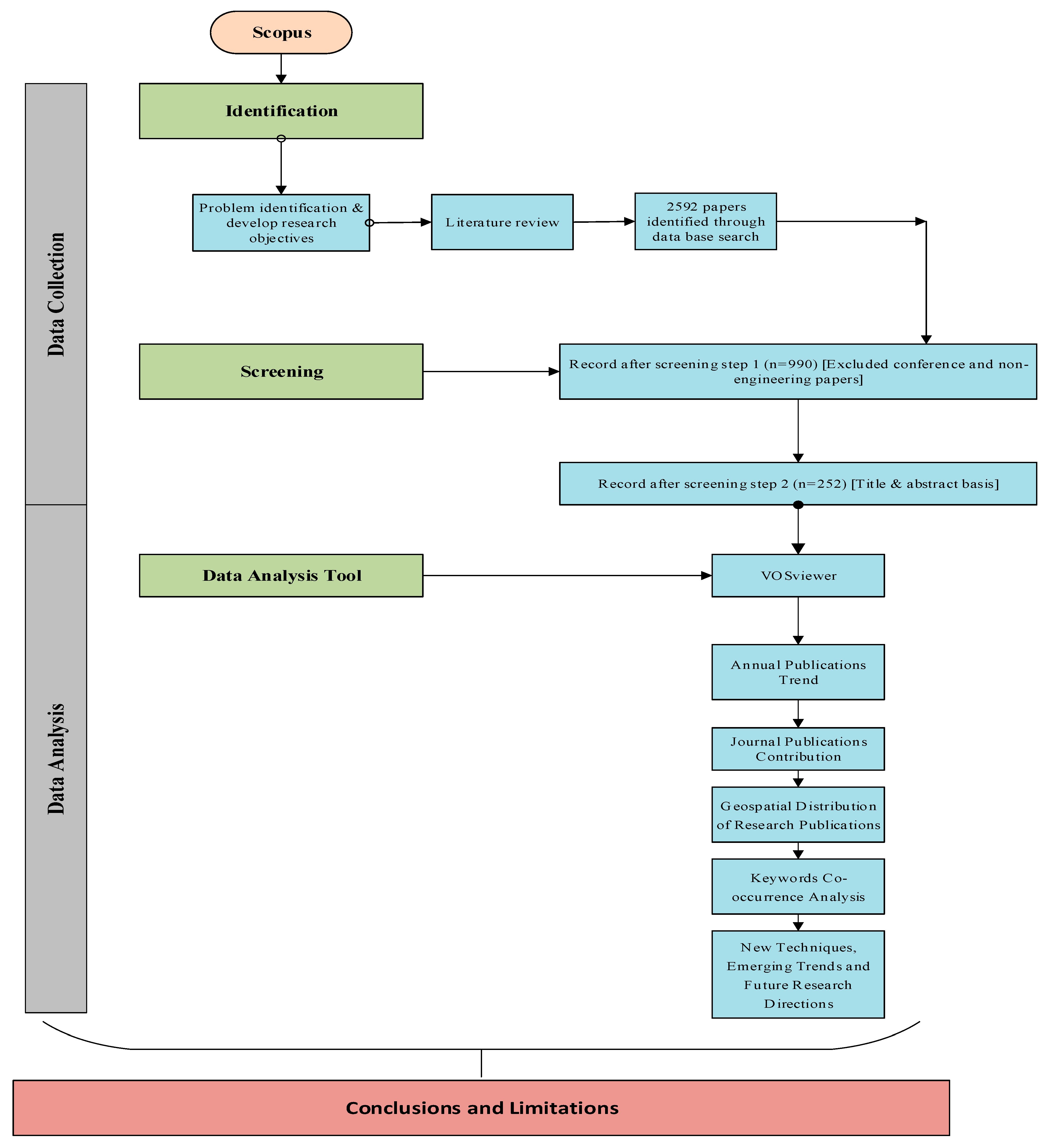

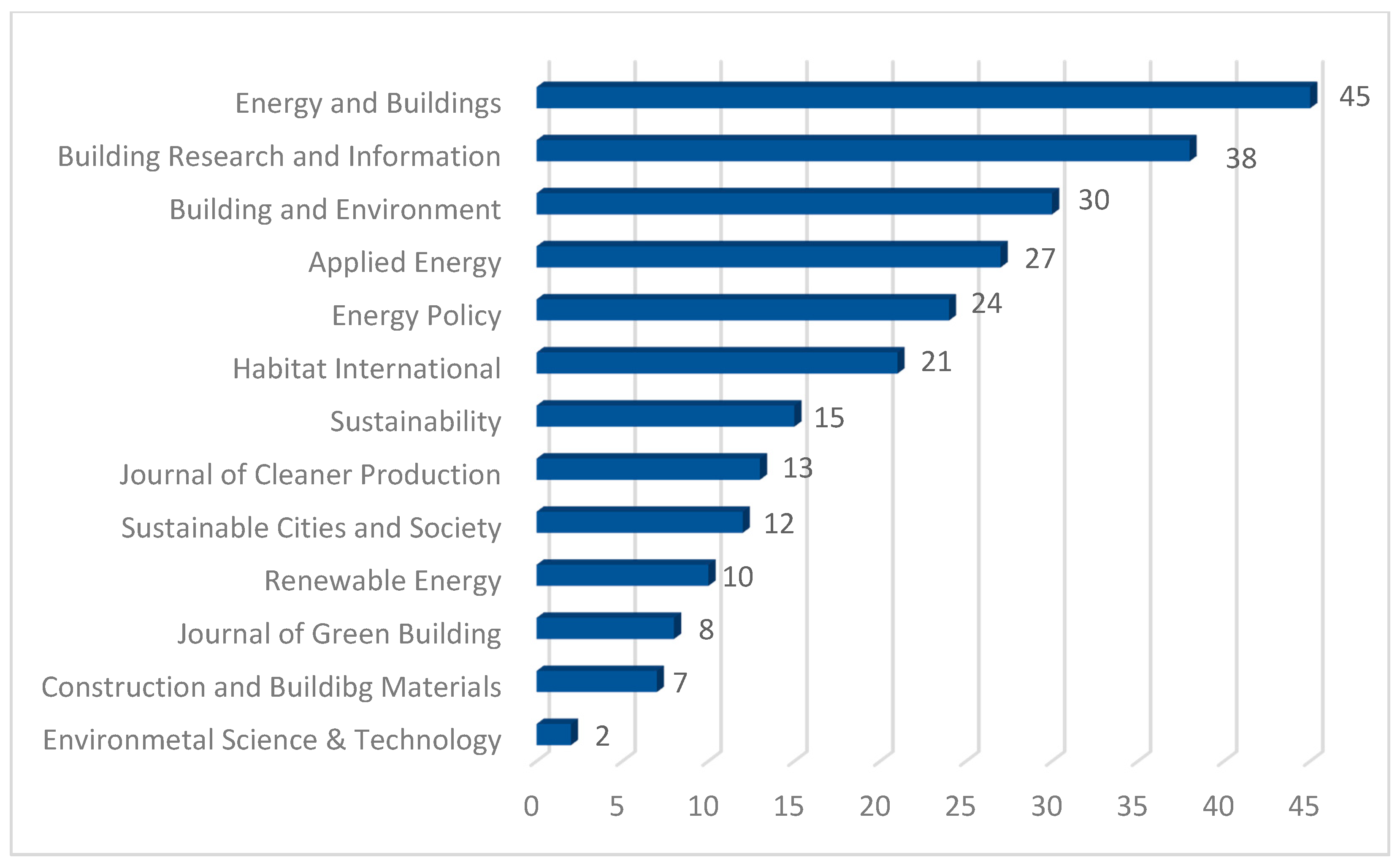
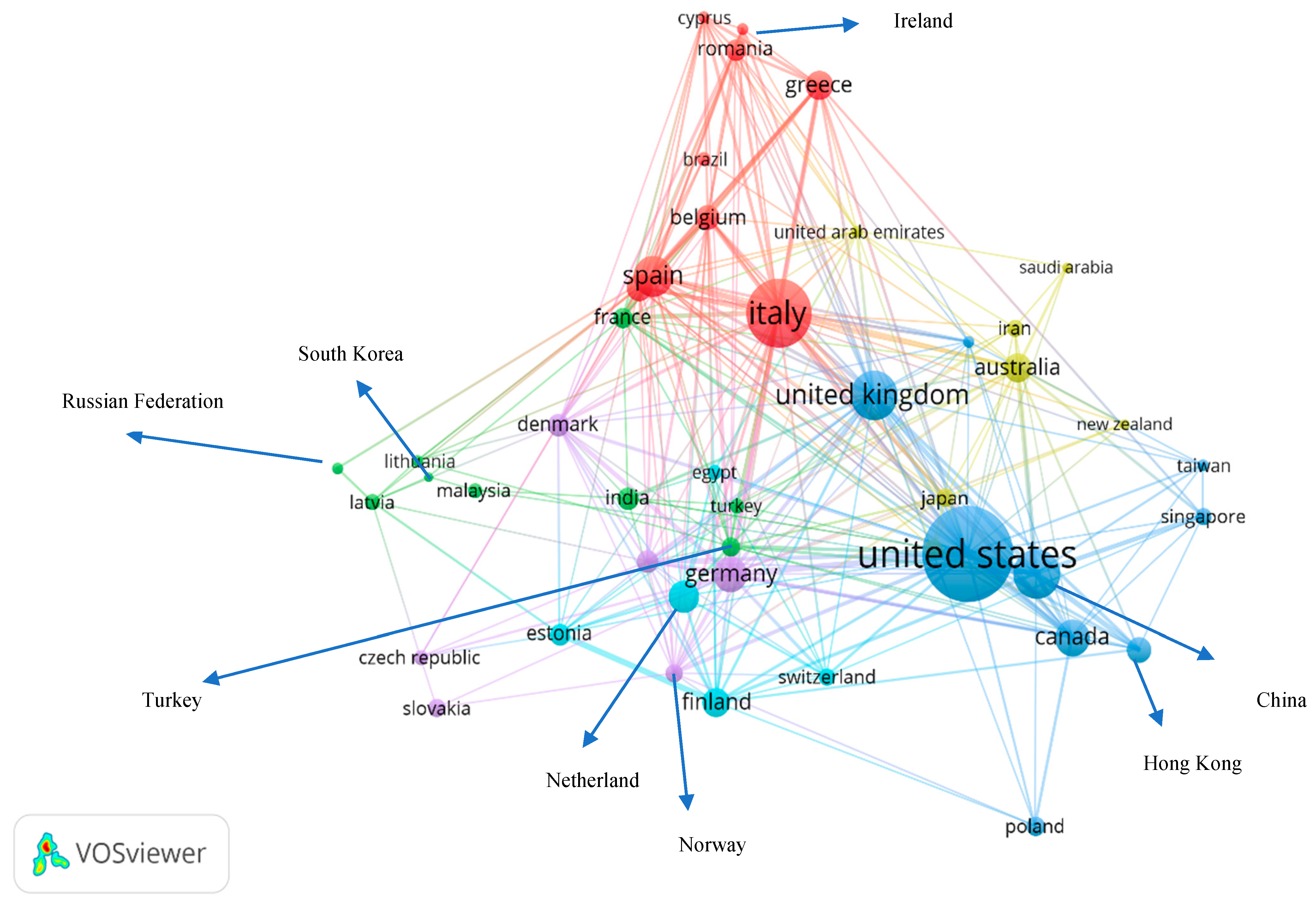
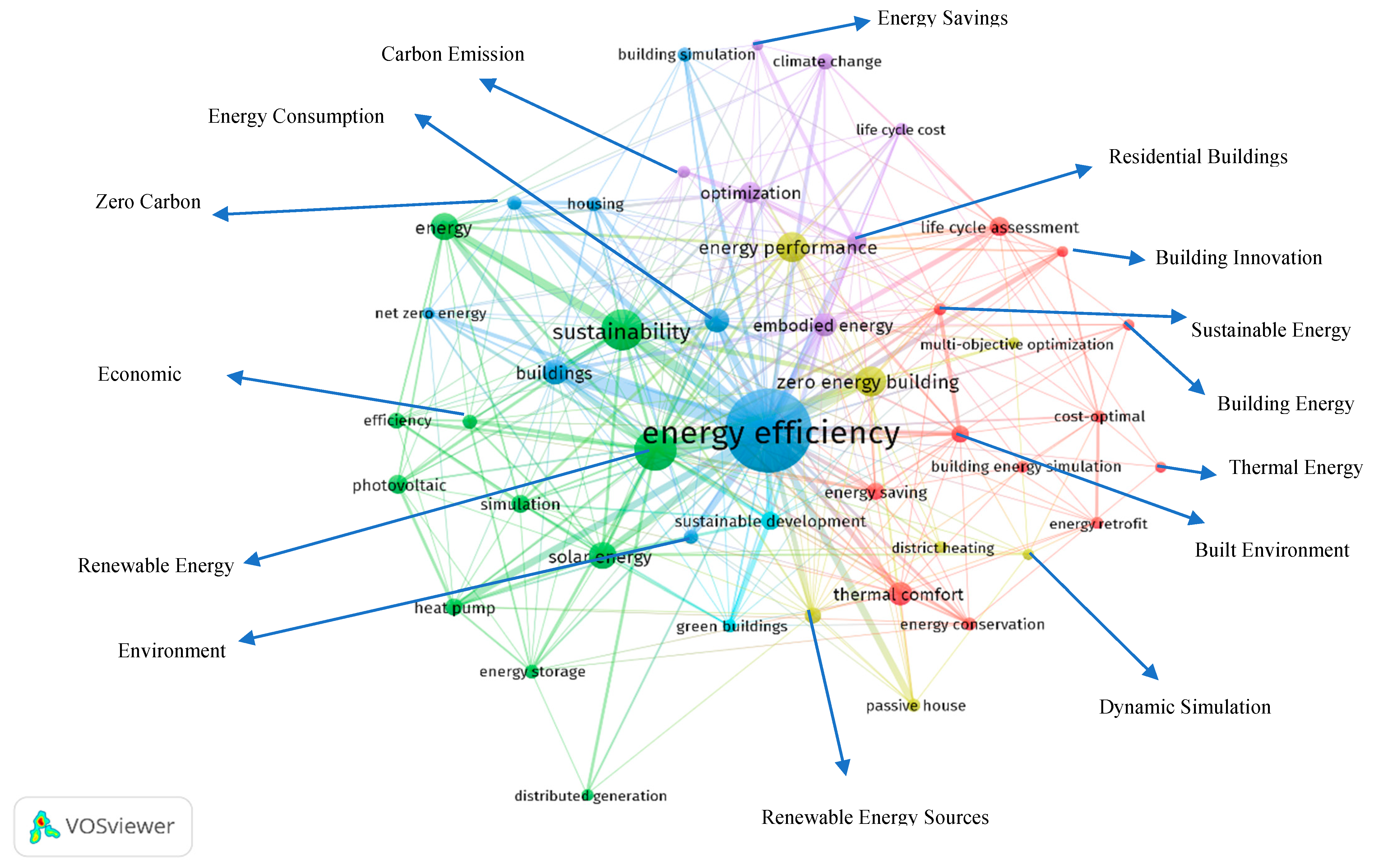
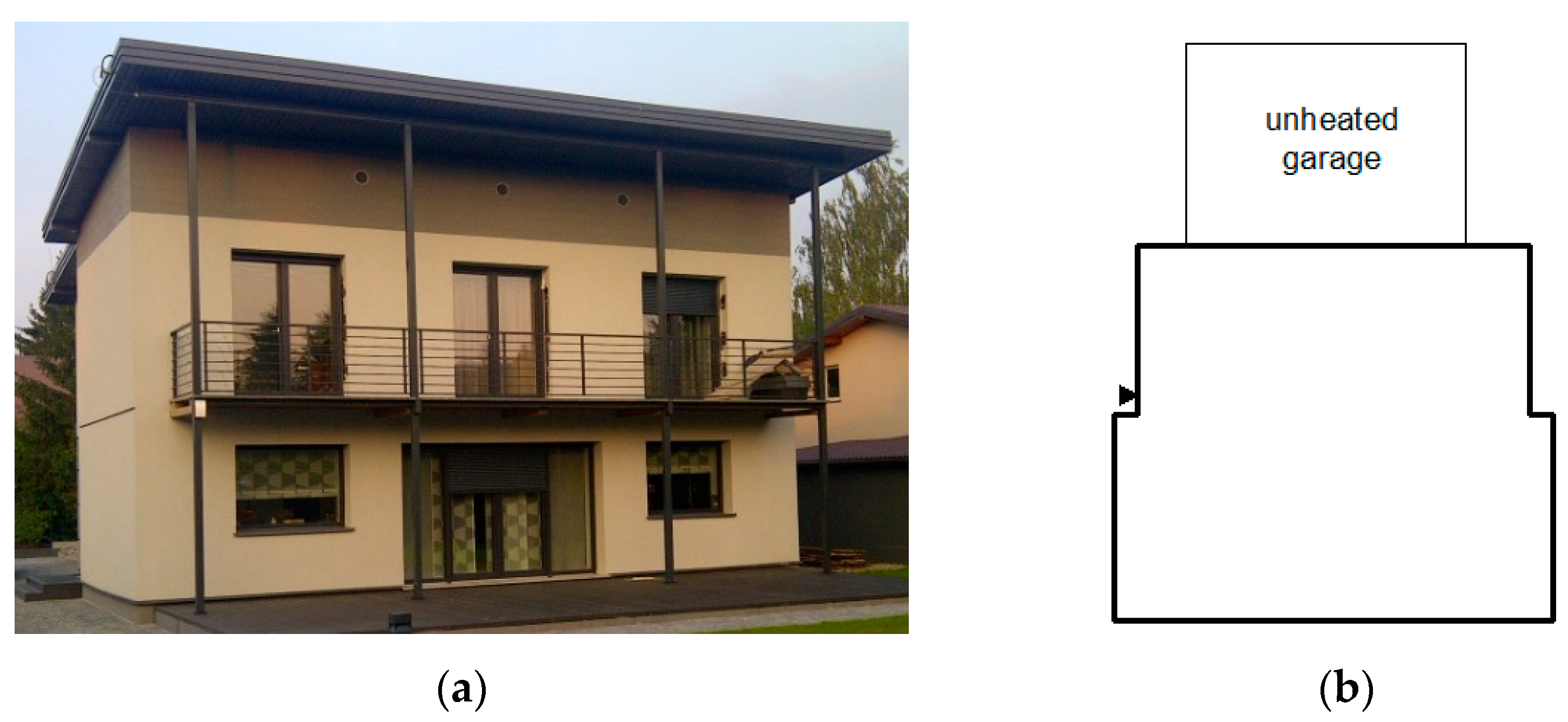
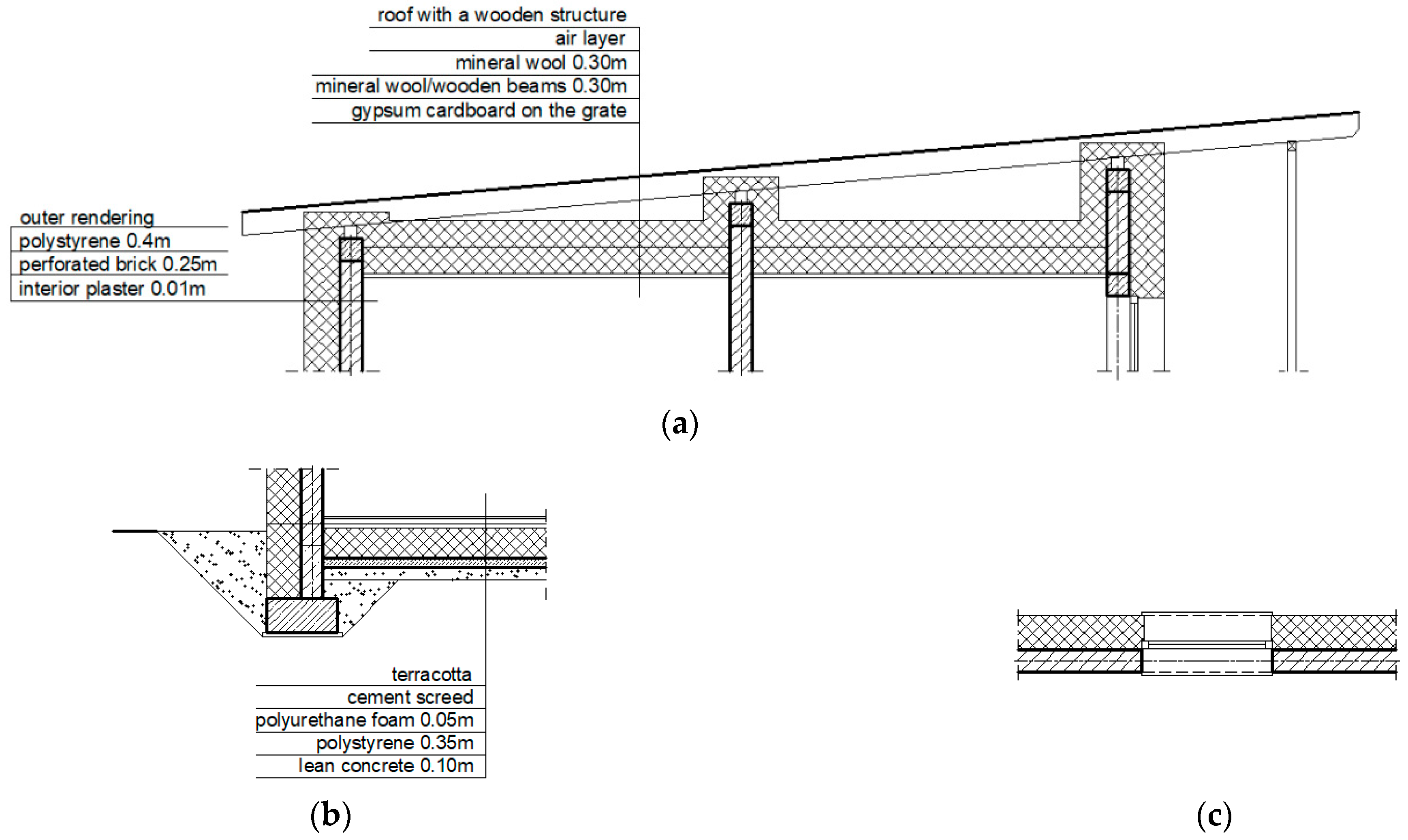
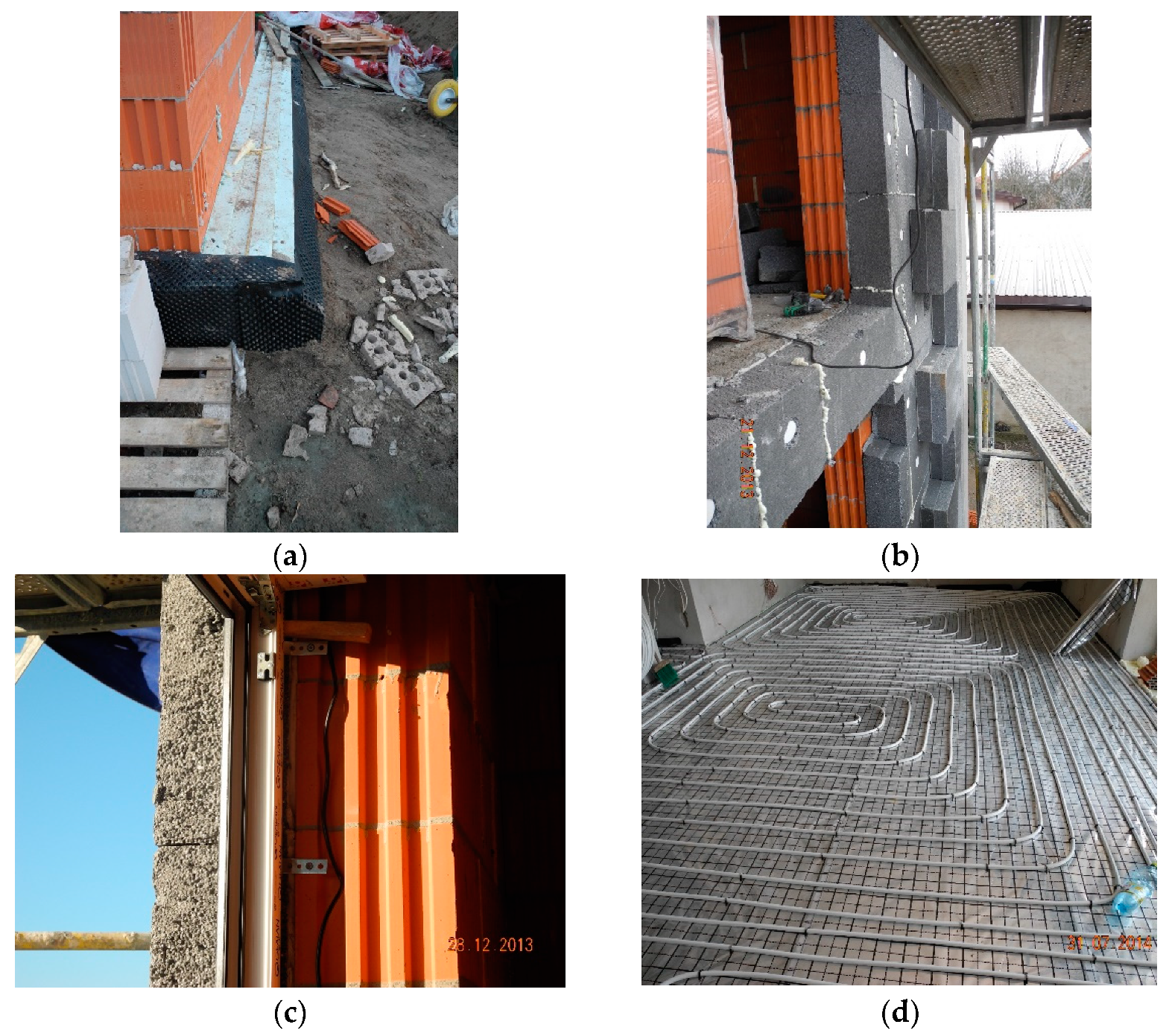
| New Techniques and Emerging Trends | Sources |
|---|---|
| Support Vector Machine (SVM) | [110,111,112] |
| Multilayer Perceptron (MLP) | [113,114] |
| Feed-Forward Neural Network (FFNN) | [115,116,117] |
| Back-Propagation Neural Network (BPNN) | [118,119,120] |
| Radial Basis Function Network (RBFN) | [121] |
| Multiple Linear Regression (MLR) | [122,123] |
| Building Elements | U-Value for the Analyzed Building | Maximum U-Value for the Standards | |
|---|---|---|---|
| WT2021 | NF15 | ||
| (W/m2K) | |||
| External Walls | 0.075 | 0.20 | 0.12/0.10 (before 5 December 2015) |
| Roof | 0.077 | 0.15 | 0.12/0.10 (before 5 December 2015) |
| Ground floor | 0.071 | 0.30 | 0.12 |
| Windows (g = 0.50) | 0.55; 0.65 | 0.90 | 0.80 |
| Door 56 | 0.57 | 1.30 | 1.10/0.80 (before 5 December 2015) |
| Location of Thermal Bridges in the Building | Ψ-Value (W/mK) | |
|---|---|---|
| Wall/Wall | −0.084 | |
| Wall/Roof | −0.055 | |
| Wall/Floor on the ground | −0.078 | |
| lintel | 0.007 | |
| Windows | reveal | −0.019 |
| sill | 0.007 | |
| Assumption | Value | Units |
|---|---|---|
| Design indoor air temperature | 20 | °C |
| Air exchange rate | 0.5 | 1/h |
| Envelope airtightness in n50 (based on the air tightness test) | 0.48 | 1/h |
| Value of internal gains | 3.0 | Wm2 |
| Seasonal space heating energy efficiency | 3.55 | - |
| Seasonal average efficiency of regulation and heat use in the heated space/heating system; heat transfer of the heating system and energy storage efficiency | 0.922 | - |
| Designed hot water temperature | 55 | °C |
| Designed cold water temperature | 10 | °C |
| Units of hot water consumption | 6.8 | W/m2 |
| Water heating energy efficiency | 3.10 | - |
| Seasonal average efficiency of DHW preparation system | 0.51 | - |
| Source of Data | Usable Energy Demand | Final Energy Demand | ||||||
|---|---|---|---|---|---|---|---|---|
| Heating and Ventilation (QU,H/EUH) | DHW Preparation (QU,W/EUW) | Total (QU/EU) | Heating and Ventilation (QF,H/EUH) | DHW Preparation (QF,W/EFW) | Total (QF/EF) | Units | ||
| Designed energy performance | ||||||||
| Computational | 1462 | 3387 | 4848 | 447 * | 2142 * | 2589 * | kWh/year | |
| 1169 ** | 2152 ** | 3320 ** | ||||||
| 10.4 | 24.1 | 34.5 | 3.18 * | 15.24 * | 18.42 * | kWh/(m2year) | ||
| 8.32 ** | 15.31 ** | 23.63 ** | ||||||
| Actual energy performance | ||||||||
| Measured | Heat pump | - | - | - | - | - | 3059 | kWh/year |
| electrical | - | - | - | 21.77 | kWh/(m2year) | |||
| energy | Total | - | - | - | - | - | 6600 | kWh/year |
| consumption | - | - | - | 46.96 | kWh/(m2year) | |||
| PV System Variant | Electrical Energy Consumption | Current Consumption of Produced Energy | Transmission and Off-Take from the Power Grid, with a 20% Allowance for Its Storage | Required Amount of Electrical Energy Production |
|---|---|---|---|---|
| kWh/year | ||||
| Variant I | 3059 | 918 | 2570 | 3488 |
| Variant II | 6600 | 1980 | 5544 | 7524 |
| Data/PV System Variant | Month | Total Annual | Units | |||||||||||
|---|---|---|---|---|---|---|---|---|---|---|---|---|---|---|
| I | II | III | IV | V | VI | VII | VIII | IX | X | XI | XII | |||
| Unit Value of Solar Radiation Energy Isol | ||||||||||||||
| Meteorological data, S, 15° (roof slope) | 24.240 | 31.894 | 64.207 | 97.280 | 139.912 | 143.628 | 140.486 | 119.367 | 90.563 | 44.202 | 21.919 | 16.900 | 934.595 | kWh/m2 |
| Electrical energy production of the PV system EPV | ||||||||||||||
| Variant I | 93.2 | 122.6 | 246.9 | 374.1 | 538.0 | 552.3 | 540.2 | 459.0 | 348.2 | 170.0 | 84.3 | 65.0 | 3594 | kWh |
| Variant II | 195.7 | 257.5 | 518.5 | 785.5 | 1129.8 | 1159.8 | 1134.4 | 963.9 | 731.3 | 356.9 | 177.0 | 136.5 | 7547 | |
Publisher’s Note: MDPI stays neutral with regard to jurisdictional claims in published maps and institutional affiliations. |
© 2022 by the authors. Licensee MDPI, Basel, Switzerland. This article is an open access article distributed under the terms and conditions of the Creative Commons Attribution (CC BY) license (https://creativecommons.org/licenses/by/4.0/).
Share and Cite
Manzoor, B.; Othman, I.; Sadowska, B.; Sarosiek, W. Zero-Energy Buildings and Energy Efficiency towards Sustainability: A Bibliometric Review and a Case Study. Appl. Sci. 2022, 12, 2136. https://doi.org/10.3390/app12042136
Manzoor B, Othman I, Sadowska B, Sarosiek W. Zero-Energy Buildings and Energy Efficiency towards Sustainability: A Bibliometric Review and a Case Study. Applied Sciences. 2022; 12(4):2136. https://doi.org/10.3390/app12042136
Chicago/Turabian StyleManzoor, Bilal, Idris Othman, Beata Sadowska, and Wiesław Sarosiek. 2022. "Zero-Energy Buildings and Energy Efficiency towards Sustainability: A Bibliometric Review and a Case Study" Applied Sciences 12, no. 4: 2136. https://doi.org/10.3390/app12042136
APA StyleManzoor, B., Othman, I., Sadowska, B., & Sarosiek, W. (2022). Zero-Energy Buildings and Energy Efficiency towards Sustainability: A Bibliometric Review and a Case Study. Applied Sciences, 12(4), 2136. https://doi.org/10.3390/app12042136







